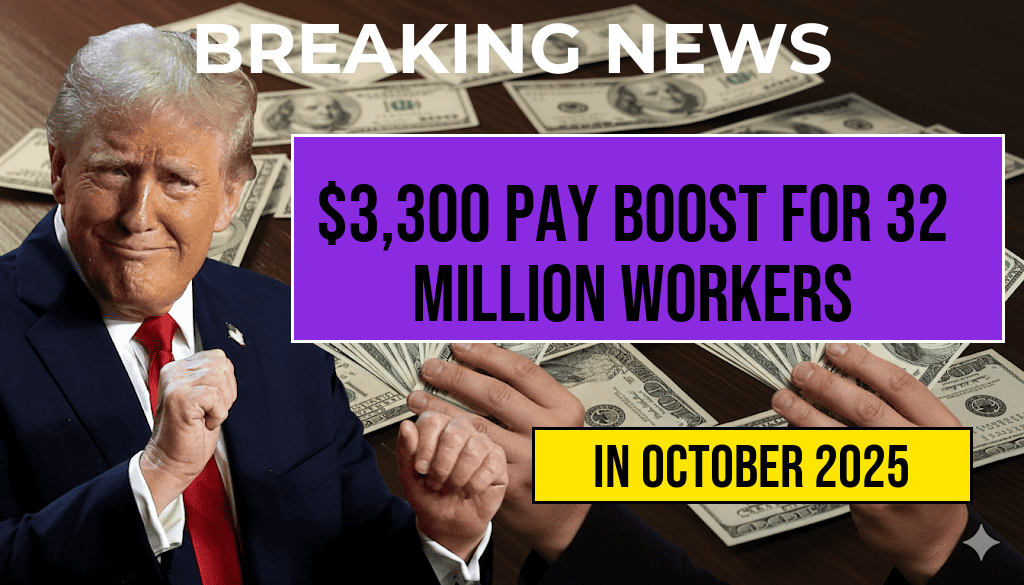A recent study has revealed that raising the federal minimum wage to $15 per hour could lead to an annual pay increase of approximately $3,300 for an estimated 32 million American workers. This significant change comes amid ongoing debates about income inequality and the cost of living across the United States. The research, conducted by the Economic Policy Institute (EPI), highlights the potential economic impact of a higher minimum wage, arguing that it could lift many families out of poverty while also stimulating local economies through increased consumer spending.
Impact on Workers and Families
The proposed increase in the federal minimum wage is seen as a crucial step towards ensuring a livable income for millions of workers. Many of those who would benefit from this change are employed in sectors such as retail, hospitality, and service industries, where wages are typically lower. The EPI estimates that the wage increase could result in a total income boost of $108 billion for these workers, providing them with greater financial stability and purchasing power.
Economic Ripple Effects
As workers experience increased earnings, the positive effects could spread throughout the economy. Higher wages could lead to increased consumer spending, which in turn may boost business revenues and potentially create more job opportunities. According to the EPI, the additional income could benefit local businesses, especially in communities that have been economically disadvantaged.
- Increased consumer spending: With more disposable income, families can afford to purchase goods and services, driving demand in the economy.
- Job creation: Businesses may respond to increased demand by hiring more employees, further reducing unemployment rates.
- Reduced reliance on social safety nets: Higher wages could decrease the need for government assistance programs, resulting in savings for taxpayers.
Challenges and Considerations
Despite the potential benefits, the proposal to increase the minimum wage to $15 has faced opposition from various sectors. Critics argue that such a significant wage hike could lead to job losses, particularly in smaller businesses that may struggle to absorb the increased labor costs. Some studies suggest that while many workers would benefit, a portion of low-wage jobs could be at risk as employers adjust to the new wage floor.
Regional Variations in Minimum Wage
It’s important to note that the cost of living varies significantly across the United States. Some regions may be better equipped to handle a minimum wage increase than others. For instance, urban areas with higher living costs may find a $15 minimum wage more feasible than rural communities where the cost of living is lower. This disparity has led to discussions about implementing a more regionally adjusted minimum wage system.
| State | Current Minimum Wage | Proposed Minimum Wage |
|---|---|---|
| California | $15.50 | $15.00 |
| Texas | $7.25 | $15.00 |
| New York | $15.00 | $15.00 |
| Florida | $11.00 | $15.00 |
Public Opinion and Legislative Action
Public support for increasing the federal minimum wage has been growing, with recent polls indicating that a significant majority of Americans favor a wage increase. Lawmakers in Congress are also beginning to take action, with several bills proposing a gradual increase to $15 over the next few years. Advocates argue that raising the minimum wage is not only a matter of fairness but also a necessary measure to address the growing wealth gap in the country.
Conclusion
The findings from the Economic Policy Institute underscore the potential benefits of a federal minimum wage increase to $15 per hour. While there are valid concerns regarding the impact on small businesses and employment rates, the overall economic benefits and the positive effects on millions of workers cannot be overlooked. As the discussion continues, it remains to be seen how lawmakers and communities will respond to this pressing issue.
For more details on the study, visit the Economic Policy Institute. For insights into public opinion on the minimum wage, check out the Pew Research Center.
Frequently Asked Questions
What is the estimated annual pay increase for workers if the federal minimum wage is raised to $15?
The study estimates an annual pay increase of $3,300 for approximately 32 million workers if the federal minimum wage is raised to $15.
How many workers would benefit from a $15 federal minimum wage?
About 32 million workers would benefit from the increase to a $15 federal minimum wage, according to the study.
What is the current federal minimum wage?
The current federal minimum wage is $7.25 per hour, which has not changed since 2009.
What are the potential economic impacts of raising the federal minimum wage?
Raising the federal minimum wage to $15 could lead to a significant pay increase for millions, potentially improving economic conditions for low-wage workers and boosting consumer spending.
When was the last time the federal minimum wage was increased?
The federal minimum wage was last increased in 2009, remaining at $7.25 per hour since then.

Leave a Reply